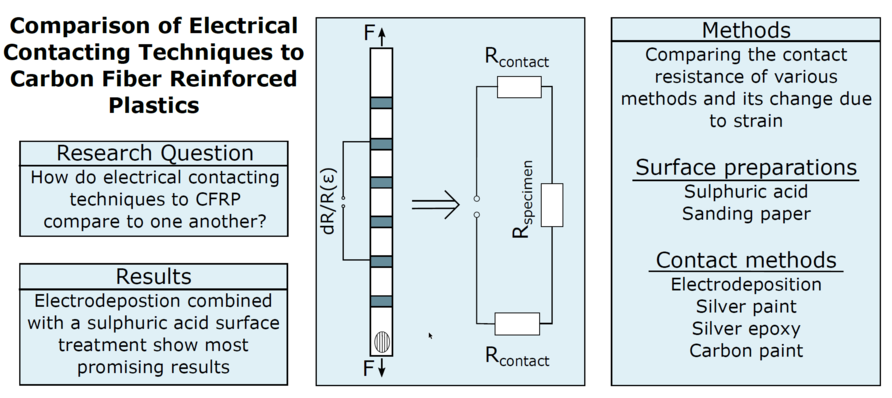The electrical conductivity of carbon fibers can be used to enable the design of intrinsically smart carbon fiber reinforced plastics (CFRPs). Resistance and impedance measurements of the structural material itself can then be used to measure physical stimuli such as strain or damage without requiring a dedicated sensor to be installed. Measuring the resistance with high precision requires good electrical contact between the measurement equipment and the conductive carbon fibers. In the literature, many different combinations of surface contacting material and surface preparation procedures are used, but only seldomly compared to one another. This article aims to compare frequently used electrical contact methods by analyzing their contact resistance to a pultruded CFRP rod. Furthermore, this study explores the change of contact resistance with increasing mechanical strain. The results show that contact resistance is highly dependent on both the material used for contacting the fibers as well as the surface preparation technique. From the combinations analyzed in this article, the electrodeposition in combination with a surface treatment using concentrated sulphuric acid shows the most promising results.
P. Scholle, S. Rüther, M. Sinapius
Comparison of Electrical Contacting Techniques to Carbon Fiber Reinforced Plastics for Self-Strain-Sensing Applications
C 2021, 7, 81, (2021) [Link]

